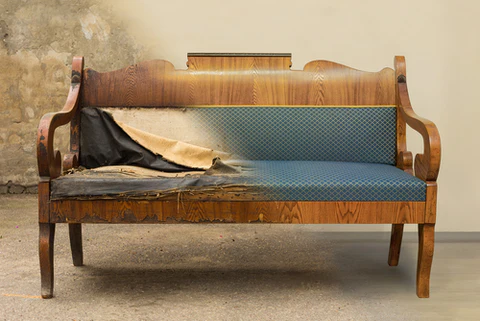Managing trekking gear effectively for the Annapurna Circuit is essential to ensure a successful and comfortable journey. The Annapurna Circuit, renowned for its diverse terrain and changing weather conditions, demands careful selection and management of gear. Proper planning and organization are crucial to making the trek as smooth and enjoyable as possible.
First and foremost, selecting the right backpack is crucial. A good trekking backpack should be comfortable, durable, and appropriately sized for the length of the trek. It should have enough capacity to carry all essential items while remaining manageable for extended periods. Consider backpacks with adjustable straps, multiple compartments, and hydration reservoirs to keep essential items organized and accessible. Ensuring the backpack is well-fitted to your body helps distribute weight evenly and reduces strain during the trek.
Clothing is another critical aspect of gear management. The Annapurna Circuit experiences a wide range of temperatures, from hot and sunny days to cold and snowy conditions, particularly at higher altitudes. Layered clothing is recommended to adjust to these variations. Pack moisture-wicking base layers, insulating mid-layers, and waterproof outer layers to stay comfortable in different weather conditions. A good quality rain jacket and windbreaker are essential, as well as a warm hat and gloves for colder segments of the trek.
Footwear is fundamental for trekking comfort and safety. Invest in high-quality trekking boots that provide ankle support and have good traction. Breaking in your boots before the trek can prevent blisters and discomfort. Carrying lightweight sandals or camp shoes can provide relief and comfort during rest periods.
Managing trekking gear also involves proper packing and organization. Utilize packing cubes or dry bags to keep your gear organized and protected from moisture. Pack essentials such as a sleeping bag, a first aid kit, and personal items in easily accessible compartments. Ensure that your gear is lightweight to avoid unnecessary strain and make it easier to navigate the varied terrain of the Annapurna Circuit hike.
In addition to personal gear, consider items for communal use, such as trekking poles, which can provide stability and reduce the impact on your knees. Trekking poles are particularly useful on uneven or steep terrain and can be adjusted to suit different sections of the trail. A lightweight tent or sleeping mat may also be necessary if you plan to camp along the way, though many trekkers opt to stay in teahouses or lodges.
Managing gear efficiently extends to regular maintenance and cleaning. After each day on the trail, ensure that your gear, especially footwear and clothing, is cleaned and dried to prevent issues such as mold or damage. Regularly check your gear for wear and tear and make necessary repairs to avoid problems during the trek.
Lastly, be mindful of the weight of your gear. The Annapurna Circuit involves significant elevation changes, and carrying excessive weight can impact your stamina and enjoyment. Prioritize essential items and consider renting or buying gear locally if it reduces the overall load.
By carefully selecting, packing, and maintaining your gear, you can ensure a more comfortable and successful trek on the Annapurna Circuit. Proper gear management not only enhances your trekking experience but also contributes to a safer and more enjoyable adventure in the stunning landscapes of Nepal.
Introduction
When embarking on the Annapurna Circuit trek, effective gear management is essential to ensure a smooth and enjoyable experience. This trek, renowned for its diverse landscapes and challenging conditions, requires careful consideration of the gear you’ll need. From selecting the right backpack to understanding the best clothing layering system, each element plays a crucial role in maintaining comfort and safety throughout the journey. Proper gear can make a significant difference in how you experience the trek, influencing your overall well-being and performance. By focusing on essential gear, choosing appropriate items, and maintaining them well, you can enhance your trekking experience and navigate the Annapurna Circuit with greater ease.
Essential Gear Overview
The Annapurna Circuit trek 15 Days demands a range of essential gear to handle varying weather conditions and terrain. Key items include a high-quality backpack, appropriate clothing layers, sturdy footwear, and other necessary accessories. A well-chosen backpack is crucial for carrying your gear comfortably and efficiently, with features that cater to long treks. Layered clothing is vital to adapt to temperature changes, while durable, supportive footwear ensures comfort on diverse terrains. Additionally, consider including items such as a sleeping bag, first aid kit, trekking poles, and water purification methods. Proper gear not only contributes to your safety but also enhances your ability to enjoy the trek’s spectacular scenery and cultural experiences.
Choosing the Right Backpack
Selecting the right backpack is fundamental for a successful trek on the Annapurna Circuit. The ideal backpack should be durable, well-fitted, and appropriately sized to accommodate all your essential gear. Look for features like adjustable straps, a comfortable hip belt, and sufficient padding to distribute weight evenly and reduce strain on your back. A backpack with multiple compartments and hydration reservoir compatibility helps in organizing your gear and keeping essentials within easy reach. For a trek of this length, a capacity of 50 to 70 liters is generally recommended, allowing ample space for both clothing and personal items. Ensure that the backpack is tested for fit and comfort before the trek to avoid discomfort and potential issues on the trail.
Clothing Layering System
A proper clothing layering system is crucial for adapting to the Annapurna Circuit’s variable weather conditions. The system typically consists of three main layers: base, mid, and outer layers. The base layer should be moisture-wicking and breathable to keep sweat away from your skin. Mid-layers, such as fleece or down jackets, provide insulation and warmth. Outer layers, including waterproof and windproof jackets, protect against rain, wind, and snow. The ability to add or remove layers as needed helps in regulating body temperature and staying comfortable throughout the trek. Ensure that each layer is lightweight and compact, allowing for easy adjustment and packing. This system helps manage fluctuating temperatures and varying conditions, crucial for a successful trek.
Footwear Selection and Care
Footwear selection and care are critical for maintaining comfort and preventing injuries during the Annapurna Circuit trek. Invest in high-quality trekking boots that offer good ankle support, cushioning, and traction. The boots should be well-fitted and broken in before the trek to prevent blisters and discomfort. Consider waterproof and breathable options to handle wet and varying conditions. Regular care of your footwear, including cleaning and drying after each trek, helps maintain their functionality and extend their lifespan. Properly treating the boots with water repellents and inspecting them for wear and tear can prevent issues during the trek. Good footwear ensures stability and comfort, allowing you to navigate the diverse terrain of the Annapurna Circuit more effectively.
Sleeping Gear Requirements
When trekking To Annapurna Circuit, appropriate sleeping gear is crucial for ensuring rest and recovery each night. A high-quality sleeping bag rated for cold temperatures is essential, as nighttime temperatures can drop significantly, especially at higher altitudes. Choose a sleeping bag with an appropriate temperature rating for the season and your personal comfort level. Additionally, a lightweight, insulated sleeping pad is important for cushioning and providing insulation from the cold ground. This combination enhances sleep quality by offering warmth and comfort during the trek. If you plan to camp, a tent that is both lightweight and weather-resistant is necessary to protect against the elements. For those staying in lodges, a sleeping bag liner can add an extra layer of warmth and hygiene.
Cooking and Eating Equipment
While many trekkers opt for meals at teahouses along the Annapurna Circuit, carrying a small, portable cooking setup can be beneficial for added flexibility and comfort. Essential cooking equipment includes a compact stove, fuel, and lightweight cooking pots. A small, multi-purpose utensil like a spork or spoon is also useful for eating. Don’t forget to pack some basic ingredients and snacks such as instant noodles, dehydrated meals, and energy bars. For hygiene purposes, bring a sponge or cloth for cleaning your cookware. A collapsible sink or bucket for washing dishes and utensils can also be handy. Managing your cooking gear efficiently helps maintain a comfortable and self-sufficient trekking experience, even when dining options are limited.
Personal Hygiene and First Aid Kits
Maintaining personal hygiene and being prepared for medical needs are critical for a safe and comfortable trek. A basic hygiene kit should include items such as biodegradable soap, hand sanitizer, toothbrush, toothpaste, and tissues. Carrying a small towel and a compact toilet kit can also improve comfort and cleanliness. A well-stocked first aid kit is essential, including supplies for treating common injuries and ailments such as blisters, cuts, and headaches. Include medications for altitude sickness, digestive issues, and any personal prescriptions. It’s also wise to carry insect repellent, sunscreen, and lip balm to protect against sunburn and insect bites. Regularly check and restock your hygiene and first aid supplies to ensure you’re fully prepared for any situation.
Hydration and Water Filtration
Proper hydration is vital for maintaining energy and health on the Annapurna Circuit. Carry a sufficient supply of water bottles or hydration reservoirs to stay hydrated throughout the trek. Water filtration systems are essential due to the potential contamination of natural water sources. Options include portable water filters, purification tablets, or UV purifiers. Make sure your chosen method is reliable and easy to use. Additionally, a collapsible water container can be useful for collecting and storing water. Proper hydration prevents dehydration and helps acclimate to higher altitudes more effectively. Regularly drinking water and ensuring it is purified before consumption safeguards against waterborne illnesses and maintains overall well-being during the trek.
Navigational Tools and Technology
Navigating the Annapurna Circuit requires reliable tools and technology to ensure you stay on track and manage the trek effectively. A detailed map of the circuit is a fundamental navigational aid, providing information on the route, key landmarks, and elevation profiles. A compass can help with orientation, especially in less clearly marked sections of the trail. Many trekkers also use GPS devices or smartphone apps with offline maps for real-time navigation and tracking. Ensure your devices are fully charged and carry extra batteries or a portable charger. While technology is helpful, it should complement rather than replace traditional navigation skills. Being well-prepared with both modern and traditional tools ensures a safer and more confident trekking experience.
Weight Management Strategies
Effectively managing weight is crucial for a successful Annapurna Circuit trek, as carrying too much can affect your stamina and enjoyment. Start by evaluating the necessity of each item in your gear. Prioritize multifunctional items that can serve multiple purposes to reduce overall weight. Opt for lightweight and compact versions of gear and clothing, as these can make a significant difference when carried for extended periods. To minimize weight, consider wearing your heaviest items, such as boots and a jacket, rather than packing them. Regularly assess your gear to eliminate any non-essential items that add unnecessary weight. Efficient weight management not only enhances your trekking comfort but also helps maintain energy levels and reduce physical strain.
Maintenance and Repair of Gear
Proper maintenance and repair of gear are essential for ensuring its longevity and functionality during the Annapurna Circuit trek. Regularly inspect your equipment for signs of wear and tear, and address any issues promptly to avoid more significant problems on the trail. For clothing and footwear, clean and dry them after each day’s trek to prevent damage and maintain their performance. Carry a basic repair kit that includes items like adhesive patches for gear, a small sewing kit for fabric repairs, and spare laces for footwear. Knowing how to perform minor repairs can be invaluable, especially in remote areas where professional help is not readily available. Properly maintained gear ensures reliability and safety throughout your trekking adventure.
Packing Techniques for Efficiency
Efficient packing is key to managing your gear and maintaining organization throughout the Annapurna Circuit trek. Use packing cubes or compression bags to compartmentalize and compress your clothing and gear, which helps maximize space and keeps items organized. Roll clothing rather than folding to save space and minimize wrinkles. Place frequently used items, such as snacks, water bottles, and first aid supplies, in easily accessible pockets or compartments of your backpack. Ensure that heavier items are packed closer to your back and centered to distribute weight evenly and improve balance. Keeping your backpack well-organized helps you access what you need quickly and efficiently, enhancing overall trekking comfort and convenience.
Renting vs. Buying Gear
When preparing for the Short Annapurna Circuit trek, deciding whether to rent or buy gear can impact your budget and preparation. Renting gear can be cost-effective, especially for items that are used infrequently or are expensive to purchase, such as high-altitude sleeping bags, specialized clothing, or trekking poles. Renting also allows you to use high-quality, well-maintained equipment without the expense of ownership. Conversely, buying gear may be preferable for items you will use frequently, such as personal clothing or footwear, ensuring a better fit and greater familiarity. Consider factors like frequency of use, cost, and convenience when making your decision. Evaluate the pros and cons of renting versus buying to determine the best approach for your trek.
Conclusion
Managing trekking gear efficiently for the Annapurna Circuit involves thoughtful planning and organization to enhance comfort and performance. By focusing on weight management, maintaining and repairing gear, employing efficient packing techniques, and making informed decisions about renting versus buying, trekkers can ensure a smoother and more enjoyable experience. Proper gear management not only improves physical comfort and safety but also contributes to a more organized and stress-free trek. With careful preparation and attention to detail, you can navigate the Annapurna Circuit with confidence, allowing you to fully appreciate the stunning landscapes and cultural experiences that await on this remarkable journey.





